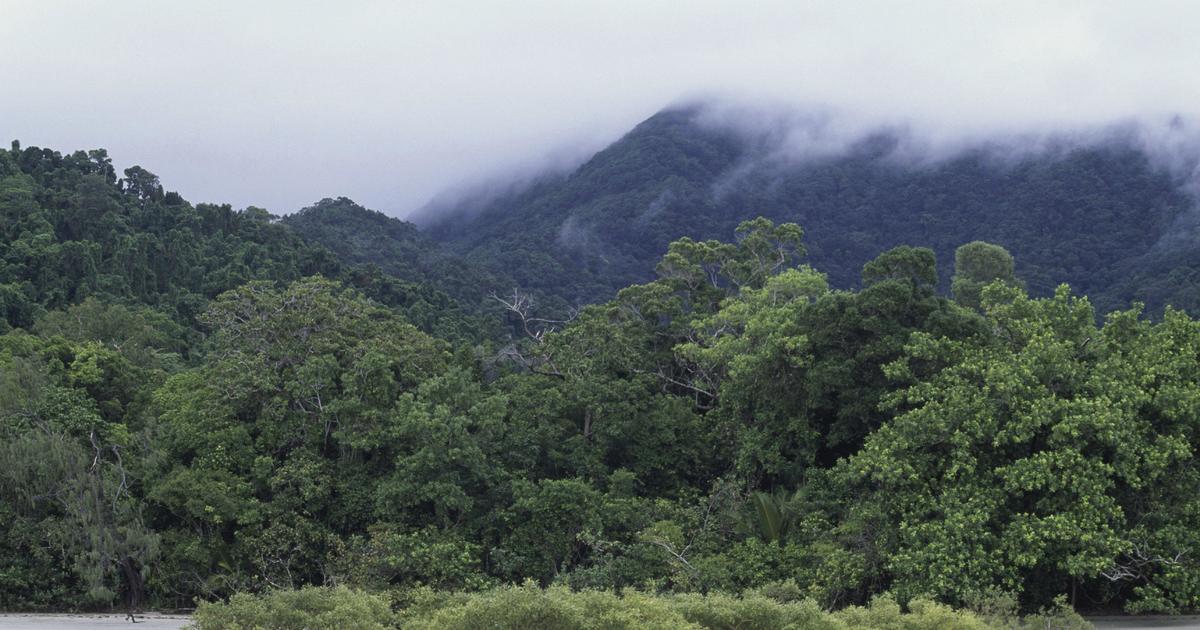[ad_1]
More than 395,000 acres from four of Australia’s national parks was returned to the Aboriginal Eastern Kuku Yalanji people in a “historic” agreement, officials announced Wednesday.
Among the land is tourist hotspot Daintree National Park, a roughly 2.2-million-acre rainforest that’s part of Australia’s Wet Tropics, which is a UNESCO World Heritage site. The rainforest, which lies on Queensland’s northeast coast bordering the Coral Sea, is believed to be one of the oldest rainforests in the world, and the original home of the Kuku Yalanji.
The agreement also includes the Ngalba-bulal, Kalkajak and Hope Islands National Parks, and will create a new nature refuge.
All of these lands, according to the Minister for Environment and the Great Barrier Reef’s office, will now be jointly managed by both the Queensland Government and the Eastern Kuku Yalanji people. The group will receive annual funds from the country to help manage the sites.
Eastern Kuku Yalanji woman Chrissy Grant, who has been working for four years to negotiate the agreement with Eastern Kuku Yalanji, said in a statement that the goal of the announcement is to “establish a foundation” to help tribe members be “in control of our own destinies.” Her goal is to eventually create an arrangement where the Indigenous group solely manages the area.
“On 29 September 2021, this significant historic event becomes legal and a reality for the Eastern Kuku Yalanji Bama to realize our vision for a more promising future for all our people,” she said.
The Daintree Rainforest is 180 million years old, according to the Queensland, Australia tourism site — older than the Amazon. The forest is part of the Wet Tropics, which was added to the United Nations Educational, Scientific and Cultural Organization’s World Heritage Site list in 1988, for its “extremely important” biodiversity, the tourism site says. The forest is home to hundreds of species of mammals, birds, and reptiles, as well as thousands of species of plants.
The Kuku Yalanji has held the title over much of the land since 2007. Under the title, the Kuku Yalanji own roughly 144,00 hectares of land, including tropical rainforests, beaches, reefs and mountains. Full time rangers are employed by the country as part of the agreement to help manage fires, vegetation, walking and vehicle tracks, camps and activities, patrols and the land and sea itself, among other things.
The Kuku Yalanji are some of the earliest humans to live in Australia, making their home in the Daintree forest with a history dating back 50,000 years, according to Australia’s Mossman Gorge Centre.
Aboriginal peoples have continuously lived in the Daintree and other areas of the Wet Tropics for at least 5,000 years, according to the government, and the area is the only place Aboriginal people have permanently inhabited a tropical rainforest.
Environment Minister Meaghan Scanlon said the agreement is a step towards reconciliation with the country’s Aboriginal people and deal with Australia’s uncomfortable and ugly past.
“The Eastern Kuku Yalanji people’s culture is one of the world’s oldest living cultures and this agreement recognizes their right to own and manage their Country, to protect their culture and to share it with visitors as they become leaders in the tourism industry,” she said. “These national parks will protect important Aboriginal cultural sites, diverse ecosystems including rainforests, woodlands, wetlands and mangroves, and form part of the Wet Tropics World Heritage Area which is recognized as the second most irreplaceable world heritage site on Earth.”
The move is just the latest in Australia’s efforts to give land back to its original Indigenous owners.
In 1976, the country passed legislation authorizing Australia’s government to purchase privately owned land to give back to Indigenous communities. Since then, roughly 50% of Indigenous land in the country’s Northern Territory has been returned to its Aboriginal owners, according to the Australian Institute of Aboriginal and Torres Strait Islander Studies.
Legislation passed in 1993 authorized Australian governments to give land back to its Indigenous owners. To get land titles, Indigenous groups must have preserved traditional laws and customs, have a “connection” to the land in question, and have rights and interests recognized by Australian law, according to the Queensland government.
So far, Scanlon said, the country has returned more than 3.8 million hectares — more 9,390,000 acres — of land. More than 5,683,423 acres of that land is jointly managed with the country’s park rangers. On the Cape York Peninsula alone, where Daintree is located, she said, there are 32 Aboriginal-owned and jointly-managed national parks.
[ad_2]




